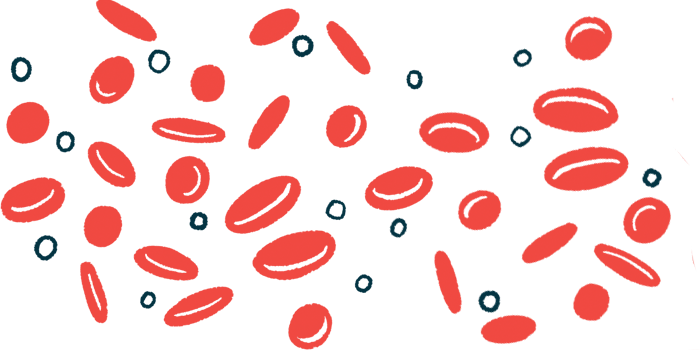SC RED Puts Focus on Patients’ Reproductive and Sexual Health
Written by |

Until Teonna Woolford faced her own infertility after a haploidentical (half-match) bone marrow transplant, she hadn’t given’t much thought to the lack of awareness and resources for sexual health across the sickle cell disease (SCD) community.
Hospital stays, liver failure, and a hip replacement surgery were already part of her 19 years of life when the transplant, which requires only a half-matched donor (usually a family member), was seen as a potential cure. But Woolford, now 30, realized at the time that she might have to give up her lifelong dream of having six children because of the chemotherapy used in the procedure.
She looked into freezing her eggs, but that option was too expensive and all grants available to cover its cost were for women with cancer. Going ahead with the transplant a difficult decision to make at 19, but Woolford felt the risk would be worth it.
“I’ve had all these 11 years to reflect, and now realize that it wasn’t a fair trade off for anyone,” said Woolford, who lives in Maryland. “Nobody should have to do either/or, like a cure or fertility; it should be a cure and fertility.”

Teonna Woolford started Sickle Cell Reproductive Health Education Directive (SC RED) in 2021. (Photo courtesy of Teonna Woolford)
Woolford’s body rejected the bone marrow transplant. The production of white blood cells in her system shut down, and it took six years for her to recover her platelet count completely.
Around two years ago her hematologist, Lydia Pecker, MD, a director at the Johns Hopkins Sickle Cell Center for Adults, told Woolford that her fertility window was closing and she should consider freezing her eggs. The cost was still about $20,000, and, as was the case 11 years earlier, there were no resources to help her pay for it.
Raising funds and distributing grants to help women with SCD freeze their eggs was the genesis of an idea that would become the Sickle Cell Reproductive Health Education Directive (SC RED), a new nonprofit with a mission to change policy, and to educate and support all patients, regardless of gender, about reproductive health in SCD.
A one- to two-year delay in puberty has been reported among adolescents with SCD, and for women like Woolford who undergo a bone marrow transplant, a common side effect is ovarian failure. In men, sperm abnormalities were present in 91% of patients in one study, and about 22% of men in another study had erectile dysfunction.
SC RED leadership
SC RED was co-founded by Woolford, its CEO; Kim Smith-Whitley, MD, executive vice president and head of research and development at Global Blood Therapeutics (GBT), a biotech company focused on developing treatments for SCD; and Pecker, director of the Young Adults Clinic at the Hopkins SCD center. Smith-Whitley now serves as chief medical officer for SC RED and Pecker as its vice chief medical officer.
The organization received 501(c)(3) status in April 2021. In its first year of operating, SC RED secured about $60,000 in funding, according to Woolford. An additional $4,000 came from Woolford’s personal fundraising, she estimated. All roles at the foundation are volunteer-based, though Woolford hopes to find a way to pay people as SC RED grows.
Woolford was first focused on awarding grants for egg freezing, but Pecker encouraged her to look beyond the procedure’s cost and view it as a social and reproductive justice issue. In that initial conversation, Pecker maintained there needed to be more advocacy if a more overarching change was to be made.
Smith-Whitley made Woolford aware of other issues faced by the SCD community, such as delayed puberty, and lack of medical protocols for pregnant women with SCD.
Ahmar Zaidi, MD, a member of SC RED’s founding board, also told her about challenges that men face, such as priapism — a prolonged, painful penile erection that can result in hospitalization. This happens because sickled cells cause blood to be trapped in the penis and unable to drain.
“When I started paying attention on social media and seeing what the guys were saying, and the girlfriends and the wives of the guys were saying, then I realized that we had to include the guys as well,” said Woolford, who before starting SC RED was an SCD patient advocate, talking to pharmaceutical companies and participating in speaking engagements.
Reproductive health is a fairly new priority for SCD patients, Woolford said, because with the advent of better treatment, they are living longer. A 2019 study projected that life expectancy was 54 years for male and female patients, while a study from 1994 found the median age at death to be 42 for men and 48 for women. Even so, she said, some people outside of the SCD community question the importance of fertility because they feel patients are either too sick or poor to have children.
“There’s been this lack of acknowledgment, that we are whole people,” Woolford said. “So now we’re in a time where we’re trying to honor our wholeness and consider everything, including reproductive health.”
Others are taking notice of Woolford’s message. At last year’s Sickle Cell Disease Association of America annual national convention, Woolford and Smith-Whitley were invited to give the Charles F. Whitten, MD, Memorial Lecture, focusing on sexual and reproductive health in SCD. She was the first patient in the conference’s history to give that honorary lecture.
Eyeing policy changes
Woolford also is hopeful that her advocacy efforts will change federal and state policies to allow better access to reproductive health services for SCD patients, the majority of whom use Medicaid. According to a Centers for Disease Control and Prevention report, 66% percent of people with SCD were insured by Medicaid for at least one month from 2014 to 2016 in California, and 56% of people were insured in Georgia. In 2012, a total of more than 55,000 people identified as having SCD were on Medicaid.
She and other hematology organizations and associations met in February with Chiquita Brooks-LaSure, administrator for the Center for Medicare and Medicaid Services and the first Black woman to hold that position. Representing SC RED, Woolford pushed for coverage of services such as egg freezing and in vitro fertilization.
Also that month, the EveryLife Foundation for Rare Diseases Rare Disease Congressional Caucus Briefing, which focused on the accelerated approval pathway, included a speech from Woolford. In addition to sharing her personal experience with SCD, Woolford said she already is hypersensitive to hydroxyurea because of the chemotherapy she had for her transplant procedure.
She’s also allergic to Oxbryta (voxelotor), a GBT-developed oral therapy that increases hemoglobin’s affinity for oxygen, and to Adakveo (crizanlizumab), an infusion treatment by Novartis to prevent blood vessel occlusion. So, she is especially hopeful for the new therapies coming down the drug development pipeline.
Looking ahead, Woolford plans to ratchet up her speaking engagements and travel. She will be in Las Vegas for the Health 2.0 conference in April, which brings industry, doctors, and patients together to discuss advancements in health care. She’s also planning on attending the 4th Global Congress on Sickle Cell Disease in June in Paris, France, and speaking at The Global Alliance of SCD Organizations’ first international conference in Accra, Ghana.
Efforts to address this gap in healthcare for SCD will also extend to other conditions and disorders, Woolford said. SC RED’s mission is sickle cell-focused, but it has plans to partner with other organizations in the healthcare space. She is currently in talks with Livestrong and the March of Dimes.
“Sickle cell is like the poster child for inequities and disparities,” Woolford said. “[If] we can change some of the ways things are done in sickle cell … it’s really a win for everyone.”
Running SC RED hasn’t been an easy task for Woolford, who has no experience in the nonprofit world and, despite her own infertility diagnosis, must discuss the topic and interact with pregnant women.
“There are some days that I just don’t even want to get out of bed, but I have to,” Woolford said.
Woolford’s personal journey has been challenging and she has moved beyond the dream of having her own children, but she also sees all the good that has come from the bad.
“These beautiful, meaningful things can come out of so much darkness,” Woolford said. “Because had I not been through that transplant and had my own diagnosis of infertility, this organization wouldn’t exist.”





